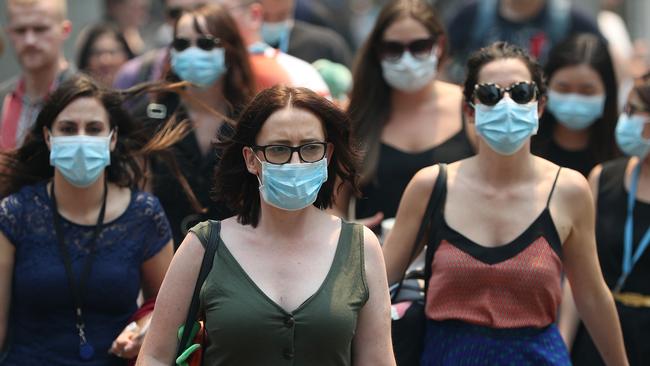Experts warn bushfire smoke haze could cause long-term health problems
The smoke cloud that has been choking Sydney and other parts of NSW is set to hang around until early next week, and experts warn breathing in the bushfire-driven pollution is like smoking a pack of cigarettes a day. SEE WHICH AREAS HAVE THE WORST AIR QUALITY.
NSW
Don't miss out on the headlines from NSW. Followed categories will be added to My News.
It’s thick, red, angry and a definite health hazard.
And the bad news is that the apocalyptic smoke cloud that has been slowly choking Sydney since Tuesday is set to hang around until early next week.
The Environment Department’s ciggie index rates the bushfire-driven pollution as the equivalent to smoking a pack of cigarettes a day.

The heaviest concentrations of smoke were felt in the Lower Hunter yesterday. where the PM2.5 particles were so bad it was like smoking 36 cigarettes if a person was outdoors all day.
The air quality in Sydney’s southwest and east yesterday was the equivalent of smoking 29 cigarettes.
MORE NEWS
Ciggy flickers caught on camera flouting fire bans
‘It’s awful’: Golfers battling smoke haze at Australian Open
Australia normally has some of the cleanest air in the world, but in the past week it has been the worst in the past 10 years, according to the Environment Department.
The Weather Bureau is predicting westerly winds will persist until at least Tuesday, which will continue to spread bushfire smoke over the city.
The hellish haze has prompted locals to don face masks en masse to try to protect their lungs.
More than 1000 people have presented to emergency departments in the past week complaining of asthma or breathing problems, and experts say the risk that poor air quality may cause longer-term health problems.
The PM2.5 particles in smoke haze are hazardous because they are small enough to be completely ingested through the nose and mouth.
They trigger a defensive response in the human body, which is often inflammation such as itchy eyes or a sore throat and can travel into the lungs and the bloodstream.
These conditions are particularly hazardous to asthma sufferers, people with pre-existing heart conditions and pregnant women.

